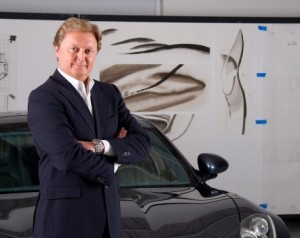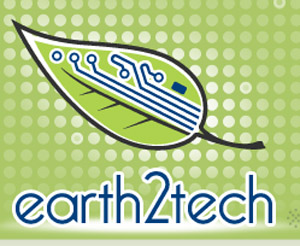We have created this interactive map to show the location of all the known, rumored, or speculative Fisker Automotive dealer locations. Please let us know if you have any new or updated dealer information.
Bo over at EVcast was able to get Russell Datz on the phone to talk a little about all the recent events.
Interview Highlights:
Karma is the technology leader that will enable the research needed to create the lower cost next car.
The “Project Nina” name is indicative of going from the old world to the new.
Some reports about the DoE loan were misleading at best. Perhaps intentionally deceptive to increase the ratings.
PHEV market projected to be $400 billion by 2030.
Karma preproduction on schedule for 4th quarter 2009. Series production begins May of 2010. Deliveries set for Summer of 2010.
Interview begins at 24:00 minute mark.
[Source: EVcast]
 American automaker Fisker Automotive was recently approved for a conditional loan of $528 million by the Department of Energy (DOE). While news reports were mostly factual, some ignored or marginalized the truth, or sensationalized irrelevant aspects of the loan and our company. Fisker Automotive would like to present the facts.
American automaker Fisker Automotive was recently approved for a conditional loan of $528 million by the Department of Energy (DOE). While news reports were mostly factual, some ignored or marginalized the truth, or sensationalized irrelevant aspects of the loan and our company. Fisker Automotive would like to present the facts.
Fisker Automotive is an American car company based in Irvine, California. The company’s goals are to help restore the U.S. as a leader in the global auto industry and to eliminate America’s dependence on foreign oil.
These DOE funds will help Fisker Automotive create or save at least 5,000 U.S. jobs, bring to market affordable, American-made plug-in hybrid vehicles and save more than 821 million gallons of gasoline (43.2 million barrels of oil) by 2016.
No DOE funding will be used for overseas operations.
Through private funding, and at no cost to taxpayers, the company has already supported hundreds of American jobs by partnering with major auto suppliers to develop the world’s first production plug-in hybrid car, the Fisker Karma.
This will put the American auto industry ahead of foreign competition. The Karma has been designed and engineered in the U.S. with the majority (65% by cost) of its parts sourced from American suppliers. Fisker Automotive searched for a U.S. plant to assemble the Karma, but none were willing or able to build the 15,000 of these advanced vehicles per year Fisker required.
The low-volume Karma will therefore be assembled in Finland by Valmet Automotive, one of the most respected contract auto builders in the world.
The next generation Karma will be built entirely in the U.S. The Karma is a technology leader necessary to reduce costs for Project NINA, the development of a more affordable, family-oriented plug-in hybrid vehicle to be made in America at a retooled assembly plant in 2012. The resulting vehicle will sell for about $39,900 after federal tax credits.
Engineering on Project NINA has already begun.
Fisker Automotive expects to export half its vehicles, the most of any American car company.
As reported by the DOE, 9.3 million of the loan will be used by Fisker Automotive as the company works with primarily U.S. suppliers to complete engineering work on the Karma. This work will be conducted in Pontiac, Michigan and Irvine, California. The remaining $359.36 million will support Project NINA and its manufacture of 75,000-100,000 plug-in hybrids per year at a retooled U.S. assembly plant, beginning in 2012. The DOE loan is conditional. In order to receive the funds Fisker Automotive must meet very specific milestones. Money is disbursed in small amounts only if the company successfully reaches these milestones.
The funds will be repaid, with interest, to the American taxpayer.
Some have asked questions about the cost of the cars.
Any new technology is expensive. Televisions, cell phones, refrigerators and even cars themselves were once too expensive for most. In time, however, costs come down. The same will happen with Fisker’s plug in hybrid electric vehicles. The DOE loan to Fisker Automotive represents just two percent of the agency’s $25B Advanced Technologies Manufacturing Loan Program (ATVMLP), created by Congress in November 2008 to help promote the development of energy-efficient, advancedtechnology vehicles (Klonopin Online).
American cars have long been underrepresented in the global marketplace, especially those in premium segments. The U.S. used to be known for building the most exciting and desirable cars in the world. It is time America is again at the forefront, and gives buyers the choice to purchase a desirable environmentally friendly car. When it comes to cars, an environmental strategy is no longer an option, it is a necessity. With the help of the Department of Energy, Fisker Automotive is taking action and making an investment in the future. We are immensely proud of what we are doing, and that we are doing it here in America.
It is unfortunate how false information can be disseminated and it is our intention to correct as much of it as possible.
Henrik Fisker, CEO
[Source: Fisker Automotive Picture: Car and Driver]
Fisker, Gore, Finland, Oh my. All these Rumors sure do Fly.
It will come as no surprise to our regular readers that there has been a great deal of misinformation being lauded over the past week. It’s time to start setting the record straight on a few things. Let’s start with the most highly publicized article on the topic. In the Wall Street Journal’s “Gore-Backed Car Firm Gets Large U.S. Loan.” The bad information begins from the very first sentence.
A tiny car company backed by former Vice President Al Gore has just gotten a $529 million U.S. government loan to help build a hybrid sports car in Finland that will sell for about $89,000.
Here the fact that former Vice President Al Gore is a partner at Kleiner Perkins Caufield & Byers, a primary investor in Fisker Automotive, makes it sounds as if he wrote the DoE check himself. Historically each of these government funded programs have had enough red tape built into them to prevent any sort of direct access to funds. It’s easy to say that’s all it took, but this funding has been in to works for a very long time.
The award this week to California startup alcoholism Fisker Automotive Inc. follows a $465 million government loan to Tesla Motors Inc., purveyors of a $109,000 British-built electric Roadster.
Yes, both companies have halo cars that are much more expensive and are assembled in other countries. It’s called product development. You take new technology that is very expensive and package it up very nicely so that those who choose to value exclusivity over price can purchase a little piece of the future. Then you take all the lessons learned from that venture and role it up into a much more cost effective, much higher volume consumer vehicle.
In this case we now have project Nina, a $40,000 plug-in hybrid vehicle for a mass market. At 100,000 units per year it will have over 6 times the production volume of the Karma. Is it cheap? Not by a long shot. Can it be purchase by many more who value the environmental advantages, most certainly.
From there the article does manage to twist back to a form of reality and get to some of the facts. You can be the judge of how it all works out in the end.

Just as one EV automaker has announced the loan that will be the life blood of it’s new product line. Yet another has chosen to concede before they even really got started. Yesterday, Canadian EV automaker Zenn announced that plans for a new “high-speed” EV have been canceled. There is even talk that production of their current “lower-speed” EV could end in the very near future.
All of this has been said to show the full support for the companies new single skin care focus of an EV drive train based on a power source provided by EEStor.
Zenn plans to make an electric drive train, the ZENNergy Drive system, which can deliver those oh-so-controversial performance claims from EEstor: 10 times the energy of lead-acid batteries at one-tenth the weight and half the price, with the ability to move a car 400 kilometers after a 5-minute charge.
[Source: earth2tech]